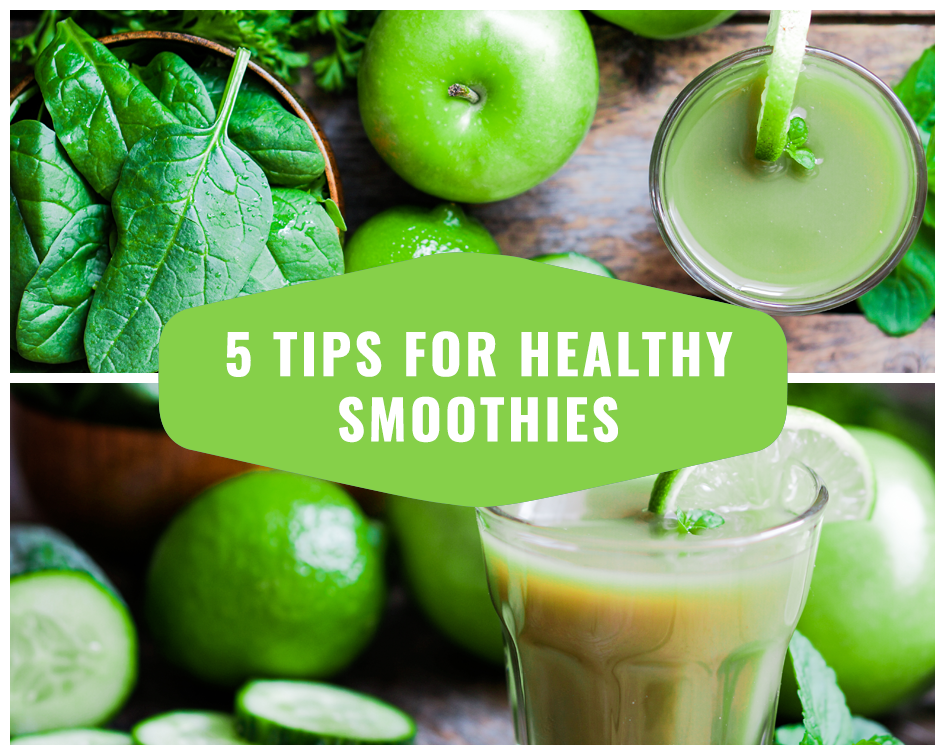Your Cart is Empty
Free Shipping On Orders over $49!
Free Shipping On Orders over $49!
shop

5 Tips For Healthy Smoothies
January 30, 2020 2 min read
5 Tips For Healthy Smoothies
Smoothies have become a staple of healthy eating – and dieting. They check so many boxes on the healthy-eating list. They are tasty, easy to make, are largely made from natural unprocessed foods, and the list of benefits goes on. Unfortunately, for many people, they check many boxes on the ‘dark’ side as well.
Use the following tips to guide you through the smoothie minefield:
DRINKING TOO MUCH
It is way too easy to over-consume when your meals are taken through a straw. Between the liquid format and the great taste, many people tend to pack too many calories when drinking smoothies.
Then there is the myth: ‘because smoothies are made from healthy foods, one cannot have too much’. These factors mean that many persons routinely have 500- or 600-calorie ‘healthy’ smoothies and remain puzzled as to why they are not achieving their fitness goals.
Tip: Whether you weigh or measure your ingredients, pay keen attention to the amount and type of foods you put into your smoothie, as well as the amount you are having in one sitting.
SOOTHING YOUR SWEET TOOTH
Adding sweeteners to a smoothie is something to avoid at all costs. Any additional sugar brings with it all the negative side effects of sugar consumption in addition to added calories.
Tip: Instead of adding sweeteners to your smoothie, blend natural ingredients such as fruits, vegetables, seeds and nuts to give a satisfying flavor.
ADDING PROCESSED FOODS
Adding processed foods to a smoothie is a fast way to turn a healthy meal into a high-calorie-count monster. A common example is the tendency to add granola to smoothies.
Tip: Instead of processed foods, try adding natural ingredients to create the desired taste. In the case of granola, for example, rolled oats, seeds or nuts can deliver a similar taste.
FINDING BALANCE
Experimenting with various ingredients to find flavors you like is a great way to ensure you enjoy your ‘healthy’ foods. In the case of smoothies, however, one has to be careful not to start piling on or removing ingredients without thinking.
If smoothies are to serve as meals, they must contain the right balance of nutrients. Simply adding ingredients for taste can easily result in too much or too little of certain nutrients in the diet. The main culprit, of course, is carbs.
Tip: Pay attention to the nutrient content of your raw ingredients to ensure that all bases are covered.
VEGETABLES FOR THE WIN
Vegetables are a great source of micronutrients and they usually are very low in calories. This makes them perfect smoothie ingredients to balance out higher-calorie foods that might have lower nutrient density. Still, many people dislike the taste of most vegetables and shy away from using them in smoothies – especially if they taste bitter.
Tip: Try to find affordable vegetables that blend well with other ingredients you might use. You are more likely to stick to it if you like the taste.
Sign up for our mailing list
STAY IN THE LOOP
Become a Sports Wholesale Supply Insider and we'll keep you up-to-date with the latest news.







